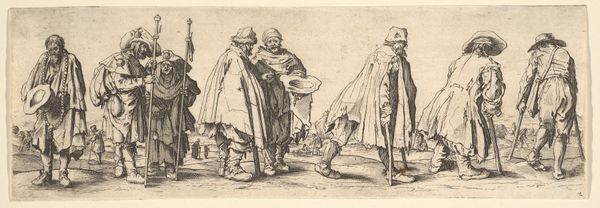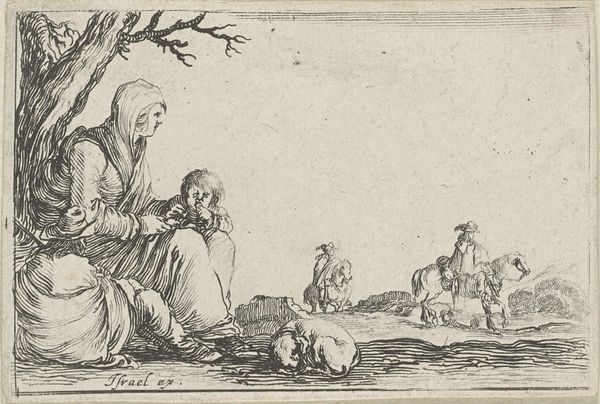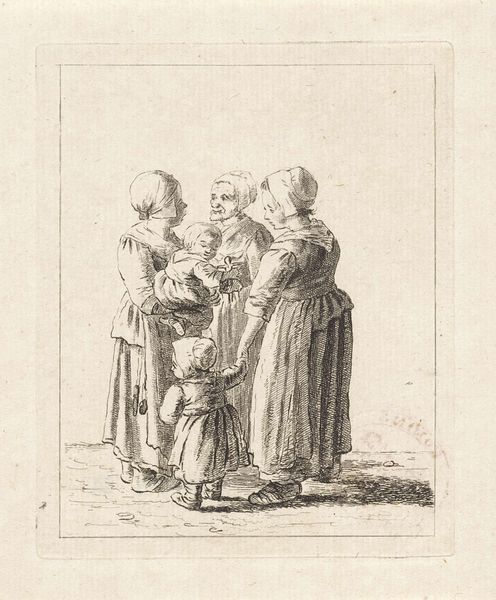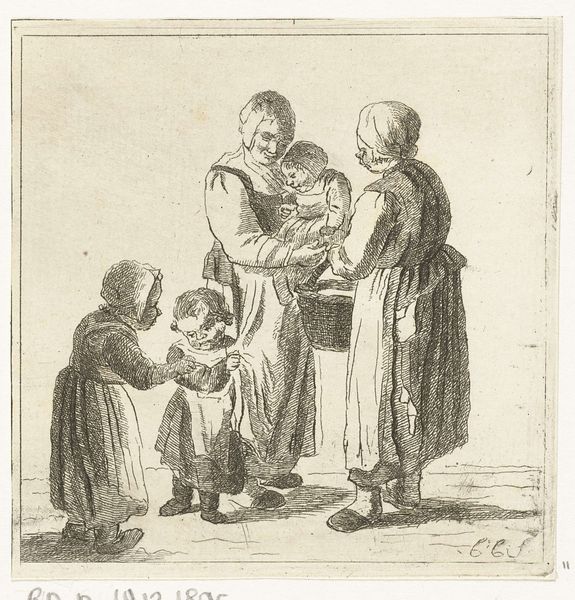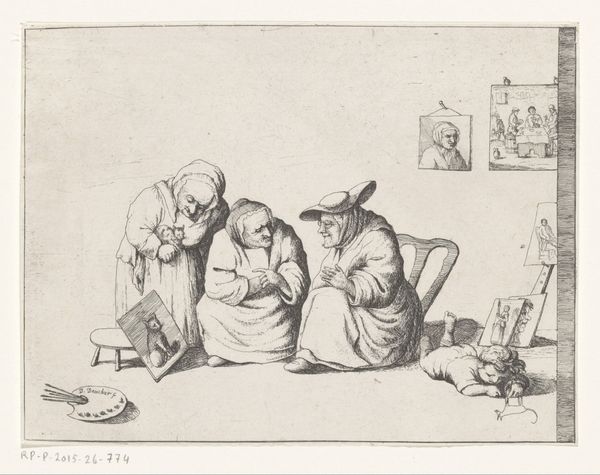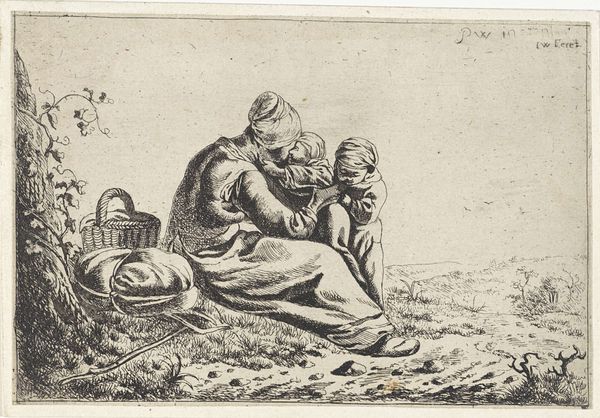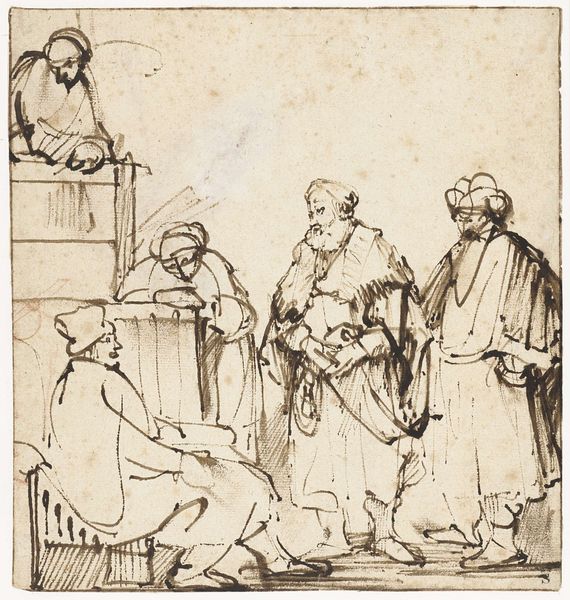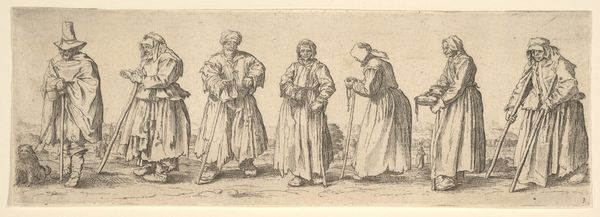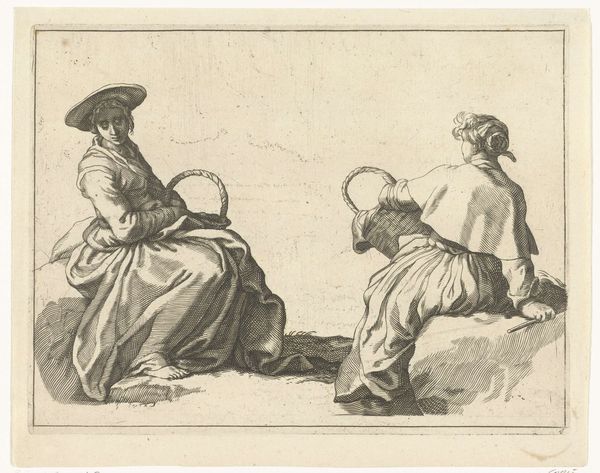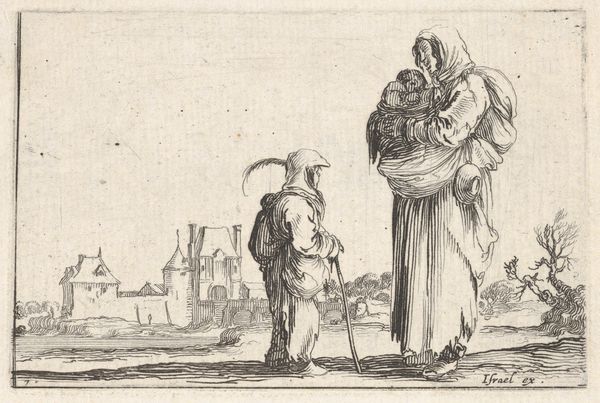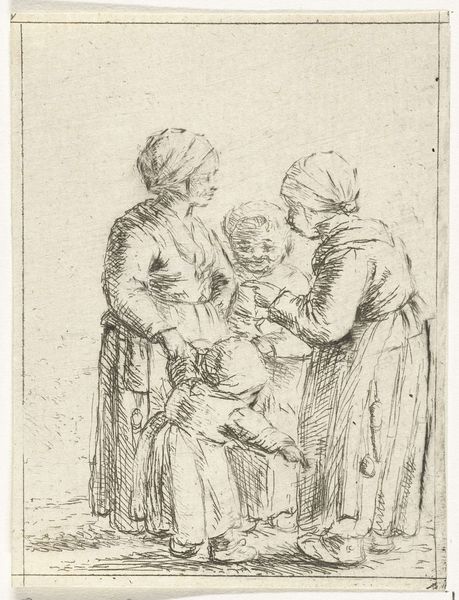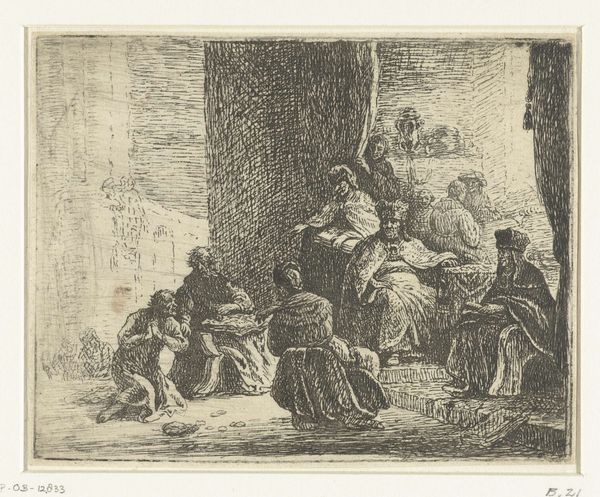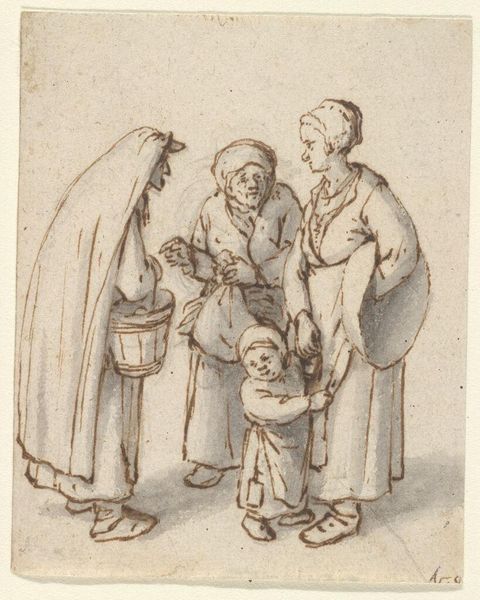
drawing, print, etching
#
portrait
#
drawing
#
medieval
#
baroque
# print
#
etching
#
group-portraits
#
men
#
genre-painting
Dimensions: 3 3/8 x 9 7/8 in. (8.6 x 25.2 cm)
Copyright: Public Domain
Editor: This etching, "Six Men and Women Beggars," made in 1630 by Wenceslaus Hollar, offers a stark look at poverty. The figures, rendered in precise lines, evoke a feeling of solemnity. How do you interpret this work in its historical context? Curator: Well, it's vital to consider the societal role Hollar played in depicting these individuals. This print was created during the Baroque era, a time marked by significant social stratification. Representations of the poor were often used to emphasize societal hierarchies. Editor: So, you’re saying the depiction isn't necessarily sympathetic? Curator: It’s complex. Prints like these were circulated widely. The audience may have consumed them as moralizing tales, warnings, or even as almost ethnographic records of a class of people who existed on the margins. Do you see a specific social commentary intended? Editor: It’s hard to say definitively, but the careful detailing seems almost…documentary, giving these figures a certain dignity. Perhaps the intent was multifaceted, both a reflection of and a commentary on societal structures? Curator: Precisely. And the fact that Hollar chose etching, a reproducible medium, speaks volumes about the intended reach and potentially the dialogue he wished to spark regarding poverty and its place in the social fabric. Consider how these images helped shape the broader cultural perception of the poor. Editor: This is a great insight. It makes me see beyond the immediate imagery to consider the cultural power dynamics embedded within the artwork itself. Curator: Yes. By questioning the intent and reception, we see art's capability to solidify, challenge, or question established viewpoints of that time and our own.
Comments
No comments
Be the first to comment and join the conversation on the ultimate creative platform.
